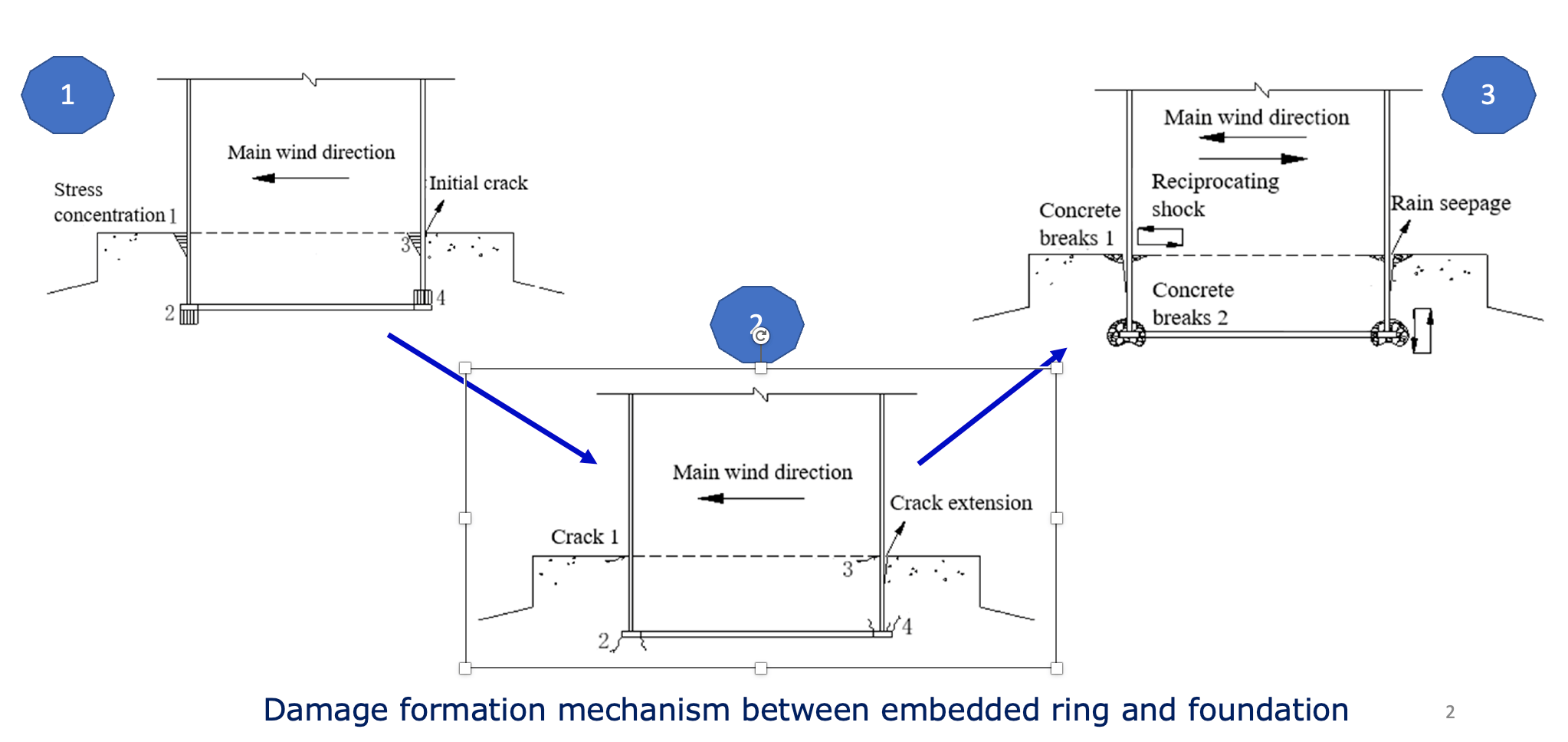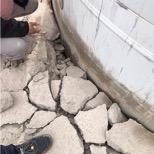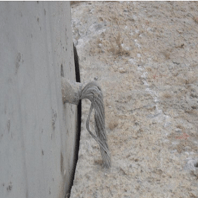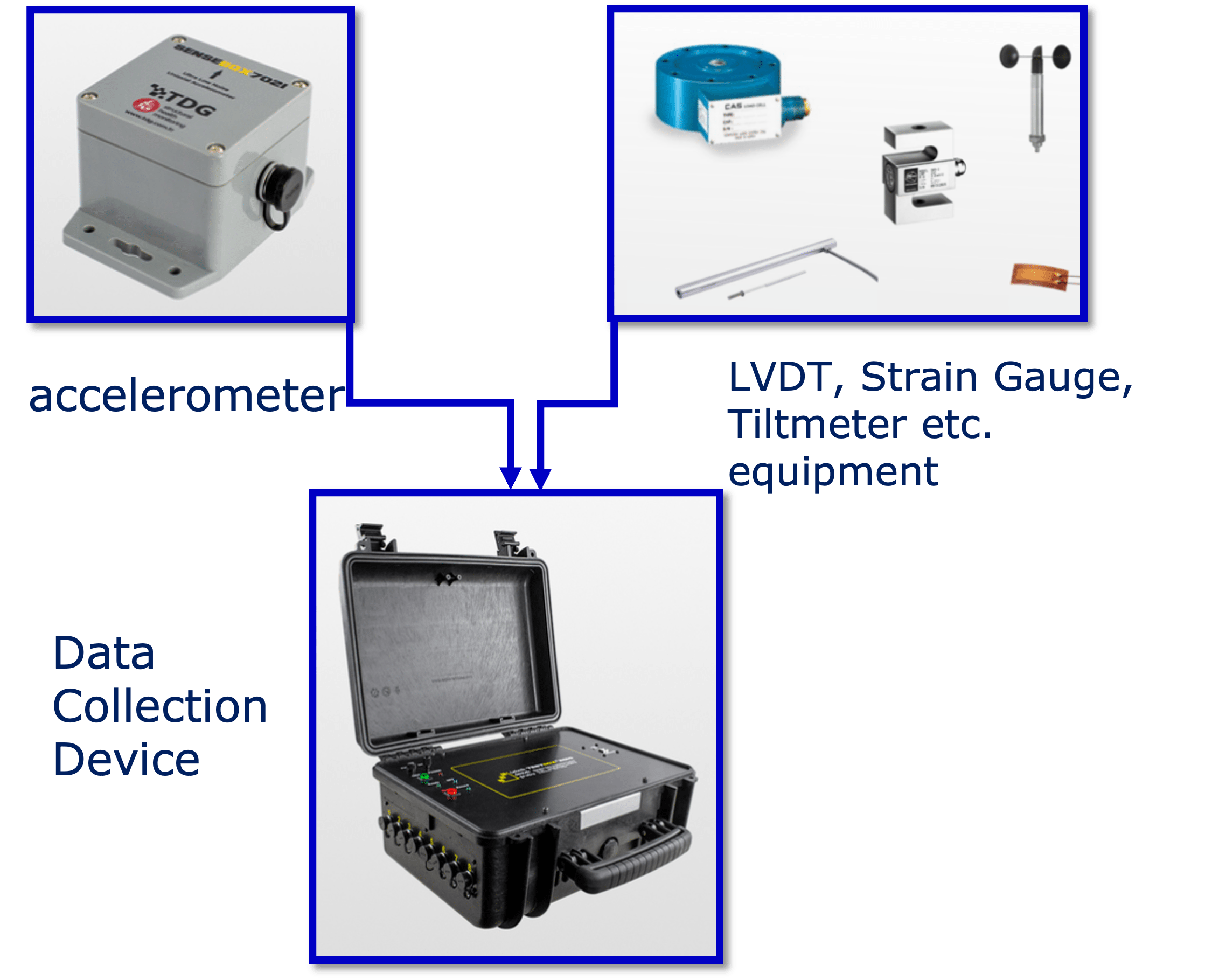Geno-Fix

Structural Strengthening Project of Existing Wind Turbines :
The main purpose and solution proposal of the project is to develop a retrofit method for the wind turbine tower with a damaged tower-foundation connection, and then to investigate the efficiency of the reinforcement applied by monitoring the structural health of the tower with the displacement-deformation and vibration-based structural health monitoring method, and The method is also applied to other wind turbine towers that have the potential to be damaged.
The project carried out will extend the economic life of the existing towers by reducing the maintenance and repair costs of wind turbines, and by making it possible to take early measures for possible structural damage.
It is observed that some damages such as concrete cracking and loss of stiffness of the tower-foundation connection occur in the wind turbine foundations manufactured with the embedded ring tower-foundation connection method.


In wind turbines connected to the tower foundation with the embedded ring method, which is an old-style manufacturing method, damages occur in this junction area over time.

Concrete cracking/breaking

Embedded ring-separation at the base interface
The proposed solution proposal will improve the compressive stress distribution between the embedded steel ring and the reinforced concrete foundation, thereby increasing the structure to the desired performance level.
It will also change the force transmission mechanism between the embedded ring and the concrete, closing the cracks and preventing the formation of new cracks in the concrete.
This applied method will prevent the concrete from cracking and will provide the ability to withstand the stresses caused by service loads, and then the fatigue life of the concrete will be increased as the cyclic stress amplitude is reduced.
REINFORCEMENT AND STRUCTURAL HEALTH MONITORING (SHM):
- Developing the Reinforcement Method (Verified by Finite Element Analysis).
- Obtaining the efficiency of the developed strengthening method by monitoring the structural integrity (SHM) .
- Structural Health Monitoring (SHM) involves observing and analyzing a system over time using periodically sampled response measurements to monitor changes in the material and geometric properties of engineering structures.
- Structural Health Monitoring (SHM) is a decision support system for real-time monitoring and reporting of the behavior and structural integrity of Civil Engineering structures against earthquakes or other destructive effects through sensors.
- Structural health monitoring (SHM) is a discipline that aims to describe the integrity of a mechanical system or a structure throughout its life cycle.
MONITORED PARAMETERS:
- Acceleration
- Vibration
- Slope
- Deformation
- Strain
- Away
- Wind speed
- Fatigue
- Corrosion(Rust)
- Modal Frequencies
- Mode Shapes
- Damping Rates
- Heat
- Moisture
SENSORS AND EQUIPMENT USED:



